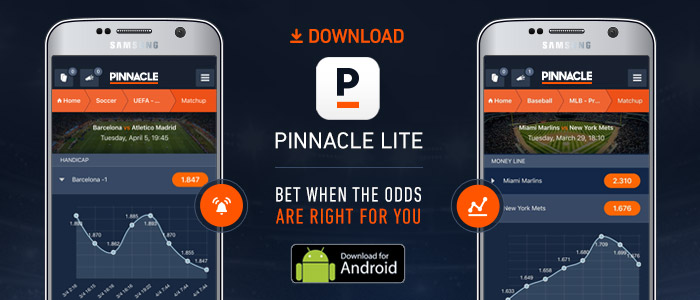The tendency to overvalue “longshots” and undervalue favourites is widely known in the world of sports betting and finances as the favourite-longshot bias. Learn what it is, how bookmakers take advantage of it and what you can do to survive it with a profit.

Every bookmaker applies a margin to his betting odds to ensure that he can make a profit. He does this by shortening the odds relative to the fair expectation associated with each outcome. For a 2-player game, for example, where the odds for player A winning are ‘a’ and the odds for player B winning are ‘b’, the margin will be given by:
Margin = [(1/a) + (1/b)] x 100%
For more extensive information, go to How do I calculate betting margins? For a fair book, this sum will always be 100%, since it is a reflection of the sum of the probabilities of all possible outcomes. For a bookmaker’s book, the sum will always be more than 100%. The excess is known as the overround, vig, or juice. What is less clear is how the bookmaker loads his margins: All on player A, all on player B or spread evenly across both players A and B?
How margin is added to the odds
Common sense would dictate that liabilities would be best managed by spreading the margin equally across each player. For example, if two players are evenly matched, their fair odds are 2.00. Applying a 2.5% margin equally across each player would shorten their odds to 1.95.
For a 2-player game, where the odds for player A winning are ‘a’ and the odds for player B winning are ‘b’, the margin will be given by: Margin = [(1/a) + (1/b)] x 100%
But what about contests with clear favourites and underdogs, for example with betting odds of 1.20 and 6.00? An even distribution of the margin would see odds shorten to 1.17 and 5.85 respectively. This, however, is commonly not what happens.
Instead, we are more likely to see odds that look like 1.19 and 5.41. The odds for the underdog have been shortened far more than the odds for the favourite. In terms of margin percentage, the underdog has a margin of 11%, whilst the favourite has a margin of just 1%. Why should this be happening? The explanation for it is traditionally provided by what is called the favourite–longshot bias.
Examples of the favourite–longshot bias
There is now considerable evidence from the world of sports betting to show that long-shots are disproportionately shorter relative to their fair prices than favourites, from horse racing, football, tennis and other minority sports.
A 1997 paper in The Economic Journal by Leighton Vaughan Williams and David Paton from Nottingham University Business School found a strong favourite–longshot bias in a sample of 4,689 runners in 481 races during the 1992 UK flat racing season.

Betting runners priced shorter than even money (2.00) experienced losses of just 7%. In contrast, betting long-shots at over 40/1 lost over 40%. A paper published by Michael Cain, David Law and David Peel in the Scottish Journal of Political Economy in 2000 found clear evidence for the favourite–longshot bias in a sample of English and Scottish football league matches played during the 1991/92 season, with just 2% losses betting at shorter than 1.66, but 15% losses betting over 5.00.
I have also reported more recent evidence for the bias in European football league match betting in my latest book, Squares and Sharps, Suckers and Sharks: The Science, Psychology & Philosophy of Gambling.
We can also see this bias in Pinnacle Sports’ own tennis match betting market. The table below shows theoretical returns from levels stakes betting of the closing odds for ATP and WTA matches played from 2011 to 2015 (excluding matches with walkovers and retirements). Pinnacle Sports’ typical margin for tennis match odds is as low as 2.4%.
| Win expectancy | Bets | Returns |
| 91 to 100% | 2,574 | -0.46% |
| 81 to 90% | 3,828 | -0.55% |
| 71 to 80% | 5,819 | 0.08% |
| 61 to 70% | 6,698 | -2.53% |
| 51 to 60% | 5,996 | -3.03% |
| 41 to 50% | 6,334 | -3.05% |
| 31 to 40% | 6,558 | -2.28% |
| 21 to 30% | 5,423 | -10.09% |
| 11 to 20% | 3,634 | -15.43% |
| 0 to 10% | 1,760 | -22.45% |
The 1,760 wagers struck at odds of 10 or longer would have seen losses of over 20%. By contrast, betting prices shorter than about 1.4 would have lost the bettor almost nothing.
Bookmakers with larger margins typically have stronger biases, with the extra margin loaded chiefly on to the underdog. For example, when Djokovic played Coric in the 2nd round of the 2016 Madrid Masters, Pinnacle Sports priced the players at 1.06 and 13.00 respectively. In contrast, the bookmaker Interwetten, with a much bigger margin, priced them at 1.05 and 8.00. Clearly, most of the difference between the two books resides on the long-shot.
Betting long-shots
Numerous explanations for the existence of the favourite–longshot bias have been proposed, including responses by bookmakers to insider information and the misjudgement of low and high probabilities as predicted by the possibility and certainty effects.
Bookmakers with larger margins typically have stronger biases, with the extra margin loaded chiefly on to the underdog.
Here, bettors are believed to express risk-seeking utility towards long-shots, whilst expressing risk aversion towards favourites, and that the non-linear probability weights that they apply in formulating these specific utility preferences arise from misperceptions of the probabilities involved. Described as such, the favourite–longshot bias simply represents a typical cognitive bias.
With bettors over-betting lognshots, the implication is that bookmakers must shorten their prices to help manage liabilities, although David McDonald and colleagues at the Southampton University’s Centre for Risk have proposed that bookmakers intentionally exploit bettors’ biased preferences rather than react to them.
Since most bettors make lazy judgments, particularly with regards the long-shots, bookmakers will heavily shorten those prices simply because they can. In contrast, bettors’ demand elasticity with respect to favourites is much greater, and hence the much narrower range in prices for favourites across bookmakers with different margins. So, if you are interested in long-term profit by backing mostly outsiders, make sure you pay a fair value for it.
Pinnacle Sport’s is proud to offer the most competitive margins in the market. For major soccer events like the European Championship, they are around 2% versus an industry average of 6%, which means you win more on every bet.
MORE: TOP 100 Online Bookmakers >>>
MORE: TOP 20 Bookmakers that accept U.S. players >>>
MORE: TOP 20 Bookmakers that accept Cryptocurrency >>>
Source: pinnacle.com
